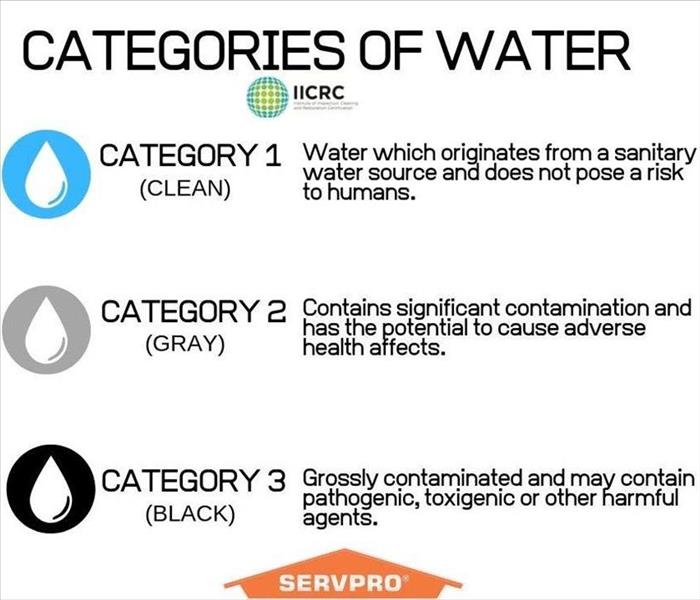Do You Know What Category of Water Damage You Are Experiencing?
8/6/2021 (Permalink)
 At SERVPRO of South Fleming Island/ North Bradford County, we are ready to respond to your emergency water loss 24/7/365!
At SERVPRO of South Fleming Island/ North Bradford County, we are ready to respond to your emergency water loss 24/7/365!
Earlier this week we received a call from a local property manager regarding sewage backup in one of their condominium communities. The backup affected 2 bathrooms and spread to the connected bedrooms in both of the affected 2 neighboring units. We were able to send an emergency crew to begin the extraction so the demo and drying process could begin. Water damage is one of the most common damages that occur in residential and commercial properties, so there are many things to keep in mind when it comes to water damage, one being the category of water damage. Since this was a sewage loss, this job was categorized as a category 3 loss. Keep reading below to uncover what the different categories of water are, and what you need to know about them.
The IICRC defines the 3 categories of water as:
Category 1: Sanitary "clean water"
Category 2: Significantly contaminated "grey water"
Category 3: Grossly contaminated "black water"
The different categories of water are classified by the course of the water damage and what potential contaminates it may have come into contact with. Understanding the types of water damage and the unique water removal or water cleanup solutions that are needed to successfully clean up the job is critical in preventing secondary damages in the future.
Category 1: Sanitary "Clean Water"
The IICRC defines a category 1 water loss as water that originates from a sanitary water source and does not pose a substantial risk. Examples of category 1 water losses are rainwater, water supply lines, toilet tanks, and toilet bowls without contaminates. Since this water is considered "clean", we can typically restore and salvage affected materials like drywall, carpet and carpet pads, and hardwood flooring.
Category 2: Significantly Contaminated "Grey Water"
Category 2 water is defined as water that contains significant contamination that has the potential to cause discomfort or sickness if consumed. Examples of a category 2 loss could be, water from a broken fish tank/ aquarium, flooding from a dishwasher or washing machine. When a category 2 loss occurs we make sure to remove wet carpet padding and use anti-microbial to disinfect affected materials.
Category 3: Grossly Contaminated "Black Water"
A category 3 water loss comes from water that is grossly contaminated and can contain pathogenic, toxigenic, and other harmful agents that could cause significant reactions from consumption or contact. Examples of a category 3 loss could be sewage backups, flooding from rivers/streams, wind-driven water from heavy storms like hurricanes and tropical storms. When a category 3 loss occurs, affected materials like drywall, carpet and carpet padding, insulation, and hardwood flooring should be removed as well as using an anti-microbial spray to disinfect.
At SERVPRO of South Fleming Island/ North Bradford County, we know that the quick response time lessens the chances for secondary damages. That is why our emergency crews are ready to act fast and start the restoration process. We have been serving Clay County and surrounding North Bradford County since 2019 for water and fire damage restoration, mold mitigation as well as reconstruction. As your one-stop shop for restoration and reconstruction needs after a loss, SERVPRO of South Fleming Island/ North Bradford County is ready to make it "Like it never even happened." Call us today to schedule a free estimate or 24/7 for emergency situations at 904-290-4040!





 24/7 Emergency Service
24/7 Emergency Service